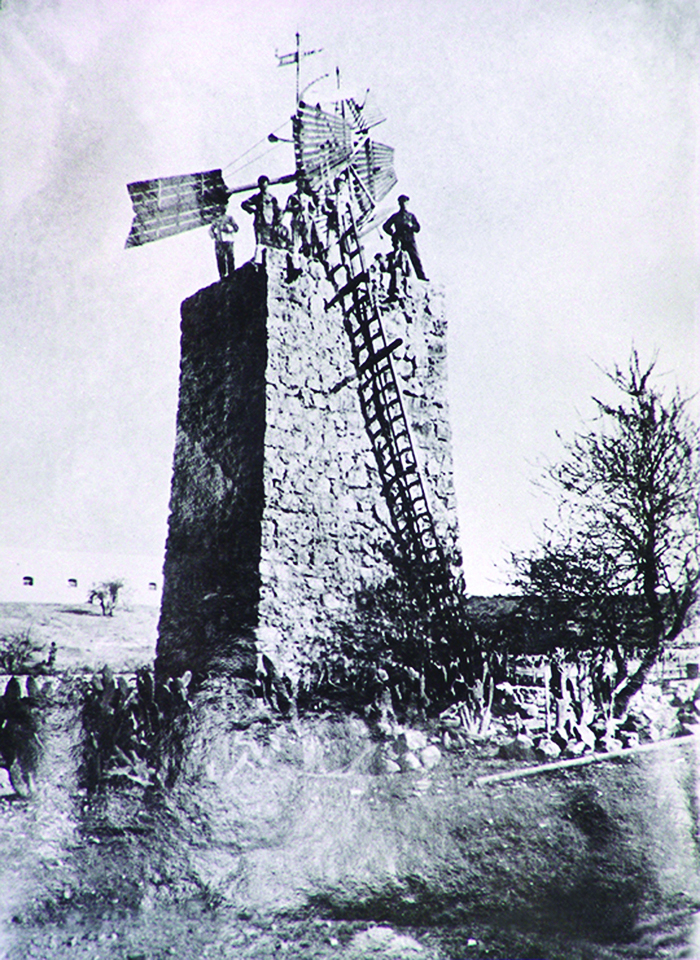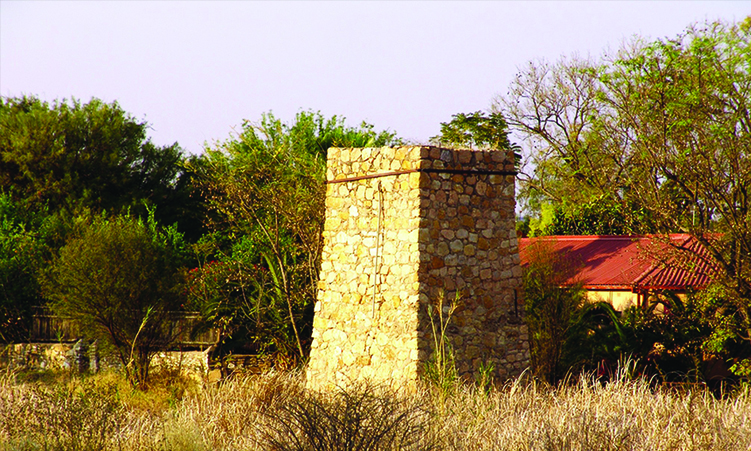Making time to stop along the journey to meet people, hear their tales, discover old ruins, and uncover Namibia’s fascinating history has long been a much-loved pastime of mine.

It has provided material for many a story.
So, it was when I was on my way to one of my favourite lodges – Etosha Safari Camp – with its relaxed atmosphere and Oshebeena bar, that I went exploring the town of Outjo and spotted the unassuming stone tower in the bleached summer grass. It piqued my curiosity until I learned that the tower is all that remains of a windmill built at the turn of last century.
Although today, Outjo is considered the gateway to Etosha National Park, it was once considered the gateway to the north and Kaokoland.
To curb indiscriminate hunting and the smuggling of ammunition and control the rinderpest that was rife in the years around 1897, German governor Friedrich von Lindequist established Outjo as a central base in the vast area stretching from the Ugab River to the Kunene River in the far north.
At the time, ‘Outjo’, the name derived from the Otjiherero word for a small rock outcrop or koppie, was a small settlement with mainly Herero inhabitants – and a scattering of Swartbooi, Topnaar, Damara and even some Aawambo who lived in the vicinity.
Its sole inhabitant of European origin was a pioneering trader Tom Lambert who had arrived in 1880, bought some land from the Herero chief, planted a vegetable garden and settled down in his hartbeeshuisie. His only European contemporaries were the odd hunters and missionaries who came past once a year.
It was only after the world wars that the settlement would grow into the central Namibian town it is today.
When the military base was established at Outjo in the late 1890s, it was decided to build a windmill near the riverbed to supply water to the fort. Strong fountains still existed in the area before bush encroachment lowered the water table. The river was surrounded by thick reeds that could easily conceal a lion and its muddy shallows provided breeding grounds for mosquitoes.
In 1900, a 9,4-metre high stone base was built to support the windmill. The windmill pumped water from an underground aquifer into a small cement dam from where it was conveyed by pipe to the fort.

Outjo’s windmill was among the first to be built in the country
.
The most well-known was the one at Otjimbingwe, which was not only used to pump water, but also to grind corn and provide mechanical power.
Windmills would soon dot the countryside, becoming an iconic symbol and playing a strategic role in the semi-arid land that is dependent on its underground water. In recent years, solar pumps have replaced many of the old farm windmills.
Today, more than a century later, the country has seen years of history being made on its journey to independence.
Outjo is a busy thoroughfare for those visiting the national park and there is nothing that remains of the old German fort.
But if you take a right as you enter the town from the south, the stone tower still stands strong, as if reminiscing silently about its past, its wooden windmill long gone, disintegrated by the elements and time.
- * Manni Goldbeck is Gondwana’s founder.
Stay informed with The Namibian – your source for credible journalism. Get in-depth reporting and opinions for
only N$85 a month. Invest in journalism, invest in democracy –
Subscribe Now!






